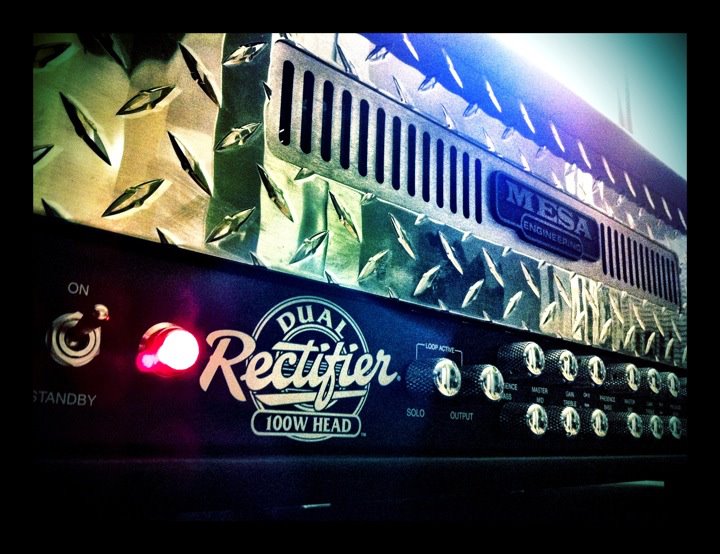The SLO show is almost exactly a month away now. Crap.
To be honest I haven’t really been as focused on timing so much as I have been on my gear. What can I say? I’m selfish. This does relate to our show in a way though. You’ll see, I promise.
You might remember (or not) that in one of my first Hideo posts awhile back, I reflected on my long-term relationship with guitar and how much more I knew there was to learn about playing the damned thing. I’ve made some progress there. But about a month and a half ago that itchy “I don’t know enough” feeling started crawling back into my brain again, and this time it went off about just how little I know of the physical workings of my instrument.
This probably doesn’t make much sense. And you probably don’t care. AND I probably sound like I have problems, which I’m sure I do. But what I mean is that while there are still plenty of things for me to learn about playing guitar, there are just as many things for me to learn about guitar, the instrument. I was lacking in a lot of the finer detailed — but fundamental — guitar knowledge that I should have learned fifteen years ago. So I went on a quest (a la Google) for that knowledge.
Of course, everyone knows the basics — a guitar has strings. If it’s acoustic it has a hole in the middle for projection. Most are wood. Electric guitars use pickups. You plug electric guitars into amplifiers. Blablabla. But the truth of it is there are innumerable variables that go into creating the right sound. Good sound. What’s the right sound? Well, that’s up to the player. And that’s why there are so many variables. See what I did there? Yea.
For our intents and purposes here I’m going to focus on electric guitar. What type of wood is the body? The fretboard? The neck? What kind of tuners does it have? What kind of bridge — floating or fixed? Whammy? Strings, what gauge? Is the neck set, thru or bolt-on? What pickups are you running? And then you have amplification. What kind of amp are you running through? What speakers does it have? What’s the cabinet construction? Power? Tube or solid state? Effects? I could go on and on, and the list of variables would be almost endless.
It’s embarrassing to admit that even though I’ve played guitar for more than half of my life I’ve never quite bothered to understand all these little things. To really discover how every little minute detail affects my sound… well, that was an eye opener, to say the least. But now, after hours and hours spent digging into countless forums and other resources (and bugging Stephen with questions about sound stuff in general), researching guitars and amps and processors, I almost feel like a guitarist reborn. Dramatic and cheesy, but no joke. For the first time I know what I want to sound like, and I know for the most part what I need to both do and obtain to achieve that.
All of this research caused me to take a step back and re-evaluate the gear I own. I’ve never been 100% happy with my sound and tone — or my playing, for that matter, and some of that of course comes down to the player and not the tools. But some of the guitars and gear I own were bought on whims as a naive youth years ago when I didn’t know any better. And while all of it has served me immensely well, I decided it was time to do a bit of fall cleaning, overhaul some inventory and pick up some of my dream gear, dammit.
So in the last few weeks I’ve sold two guitars, given another one to Gary to learn on, picked up a different six string and my very first seven string, sold my Marshall half stack and gotten my dream rig — a Mesa Boogie Dual Rectifier Solo head running through a Rectifier cabinet (2×12 in my room for space, and a Traditional 4×12 for the show).
Who knows, maybe my “enlightenment” was just a subconscious excuse to go out and get stuff, but I’m in love with my revamped guitar family and finally feel a little bit at peace. I’m also sure that everyone around me is relieved because now I won’t just be babbling to them about guitar gear 24/7 anymore. Maybe. Actually I lied and this is very unlikely, because I’m still looking to swap for a new processor and start recording stuff more often (so we can keep cranking out badass remixes like Stephen did with Canta Per Me).
So what does this all mean for the show? Well, the Hideo posse is a collective, and how we sound as a whole is determined by how we sound as individual musicians. Just over one year after our premiere show, I’m going to be bringing some new toys and techniques to the table in an effort to up my contribution and help make the show as awesome as possible. And be all show-offy and whatnot. Look out.









